Dai An Temple - The religious center of a land rich in tradition
Mau A is a land with a rich history, a place where the cultures of 10 ethnic groups meet. In this rich cultural space, Dai An Temple has long played a central role in the beliefs, closely associated with the spiritual life of the local people.
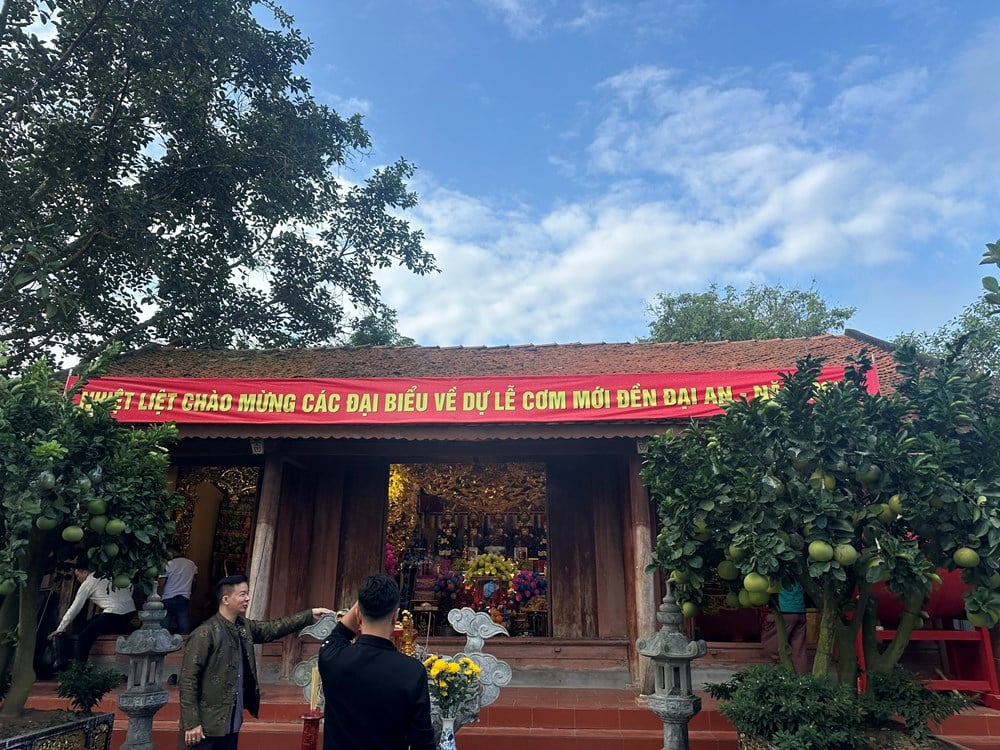
Dai An Temple (also known as Buc Temple) is a sacred ancient temple located on the banks of the Red River, in Dai An village, Mau A commune, Lao Cai province. For a long time, this place has been an important religious center of the local people, preserving many unique cultural and historical values of Mau A land.
Dai An Temple was built in the 19th century, initially made of rustic materials such as thatch, bamboo, and palm leaves. The temple worships the Three Gods: Son Tinh Dai Vuong, Cao Son Dai Vuong, and Quy Minh Dai Vuong - three gods associated with the legend of founding and defending the country of the Vietnamese people.
By the 1940s, time and war had severely damaged the temple. When lowland residents came to reclaim this land, the community rebuilt the temple in a more spacious and spacious location.
The person who had great merit in the care and restoration was Mr. Tien Dinh, the first temple manager. He and the villagers organized the procession of incense sticks from Dong Cuong Temple to Buc Temple, expanding the worship of the Holy Mother of the Upper Realm, symbolizing the mountains and forests, fertility and good crops.
The temple's existence has gone through many stages: 19th century: built with primitive materials; 1942: restored on the old foundation, replaced the tiled roof, built two gables with bricks, kept the original columns and internal structure.

Period 1960-1976: due to the policy of eliminating superstition during the anti-American resistance war, the temple was used as a meeting place and classroom; the worship objects were carefully preserved by the villagers.
1976: The cooperative removed the tiles for production, and people temporarily covered the roof with palm leaves to preserve the remaining part.
In 2006: Dai An village people completely renovated, rebuilt, tiled roof, set up an altar and brought statues to worship, forming the current appearance.
According to Party Secretary and Chairman of Mau A Commune People's Council, Mr. Ha Duc Anh, Dai An Temple is one of the few ancient temples that still preserves its original value along the upper Red River, and is also a spiritual destination for people and tourists from all over.
Every year, the Temple has 5 main festivals including: Traditional festival on the 5th and 6th of the first lunar month; New Rice Offering ceremony in the 9th lunar month (before the first day of the month); Mother's death anniversary in the 3rd month; Father's death anniversary in the 8th month; Year-end Thanksgiving ceremony in the 12th month.
Outstanding festival activities such as incense offering, sacrifices, palanquin processions, buffalo slaughter, and folk games: tug of war, throwing con, pushing sticks, Tay dance... create an atmosphere that is both sacred and rich in cultural identity.
On July 4, 2013, Yen Bai Provincial People's Committee issued Decision No. 790/QD-UBND to rank Dai An Temple as a provincial historical-cultural relic. This is a worthy recognition of the historical, cultural and spiritual values that the relic preserves.

Today, the Temple has become a unique cultural institution, a place to educate the tradition of "When drinking water, remember its source", nurture national pride and is an important resource for developing cultural and spiritual tourism associated with the local economy and society.
However, over a long period of existence, the relic has degraded and can no longer meet the increasing needs of religious activities.
According to Mr. Ha Duc Anh, the restoration and embellishment need to be carefully studied in terms of location, construction direction, and arrangement of worship space, in order to realize the Prime Minister's direction: turning heritage into assets, ensuring harmony between preserving identity and sustainable development.
Realizing the importance of heritage conservation, Lao Cai Provincial People's Committee has issued an investment policy for the Project "Construction, restoration, renovation and promotion of the value of Dai An Temple", assigning Mau A Commune People's Committee to coordinate with specialized agencies to develop a master plan, propose a design plan and restore the relic's architecture. This is a step demonstrating the province's deep concern for the preservation of cultural heritage.
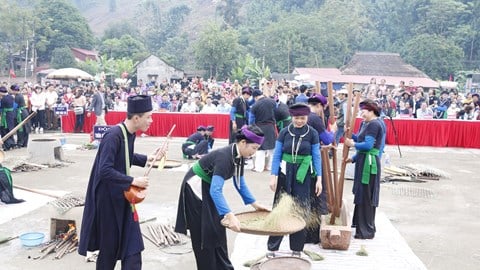
Highlights of the New Rice Festival at Dong Cuong Temple of the Tay Khao people in Van Yen
Heritage conservation associated with sustainable development
At the workshop, the most concerned content was determining the construction direction of the Temple in the new planning. According to the People's Committee of Mau A commune, this is not only a technical requirement but also a matter of cultural and spiritual significance, related to local traditions and natural landscape.
Two main options were put forward for experts and delegates to evaluate:
Option 1: Keep the current Northeast direction of the temple.
This plan creates a “minh duong tu thuy” position when the main direction looks out to the Red River, and also has the meaning of “facing the Dong Cuong origin”, contributing to connecting with the local spiritual infrastructure. However, the traffic route in front of the land is in the urban planning, in the long term it may limit the view from the temple to the river.
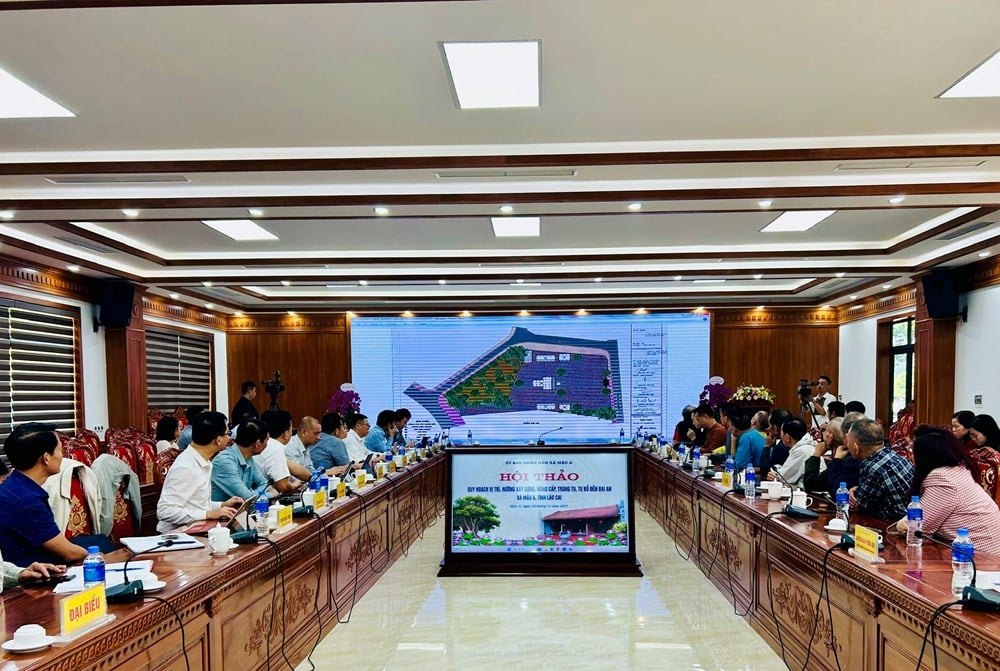
Option 2: Adjust the temple direction according to the new landscape axis, facing South.
The advantage of this option is to take advantage of the existing entrance system and create a landscape connection between the Temple and Pagoda, expressing the spirit of belief "Buddha - God of the same origin".
However, turning the temple to the South no longer retains the original direction and reduces the meaning of "facing Dong Cuong", at the same time requiring careful research to ensure harmony and independence between the two spiritual works.
Besides the temple orientation, the workshop also focused on clarifying the architectural scale, construction plans for items and the official name of the temple.
According to the project, Dai An Temple will be built on an area of over 6,500m², of which the main temple will be 243m² wide, with the architecture imitating Dong Cuong Temple - a cultural symbol of the upper Red River - but with adjustments to suit local conditions. The main materials are expected to use ironwood, green stone and traditional materials.
In addition, consider the name "Trinh Dong Cuong Temple" or combine the double name "Dai An Temple - Trinh Dong Cuong" to affirm the historical - religious connection between two important places of worship in the area.

In his report at the workshop, Mr. Chu Chinh Son, Deputy Secretary of the Party Committee and Chairman of the People's Committee of Mau A Commune, affirmed that the restoration of Dai An Temple received great consensus from the government, people, businesses and philanthropists at home and abroad. This is an important resource to help the locality implement the project in a systematic and scientific manner.
This workshop is considered a key preparation step, aiming to collect opinions from scientists, experts and the community to complete the planning scheme, ensuring that the restored project retains its original identity, promotes historical - cultural - spiritual values, and at the same time becomes a new tourist highlight of Mau A and Lao Cai province.
According to Mr. Duong Tuan Nghia, Deputy Director of the Department of Culture, Sports and Tourism of Lao Cai province, the state management agency strongly supports the restoration of relics in accordance with the provisions of the law. In the context of many difficulties in local budget, the preservation, restoration and promotion of the value of relics using socialized resources is very necessary.
According to Mr. Nghia, during the restoration and construction process, according to the Law on Cultural Heritage, it is necessary to preserve the original values of the relic.
At the workshop, managers, scientists, artisans and people agreed that the temple's direction should be kept intact.
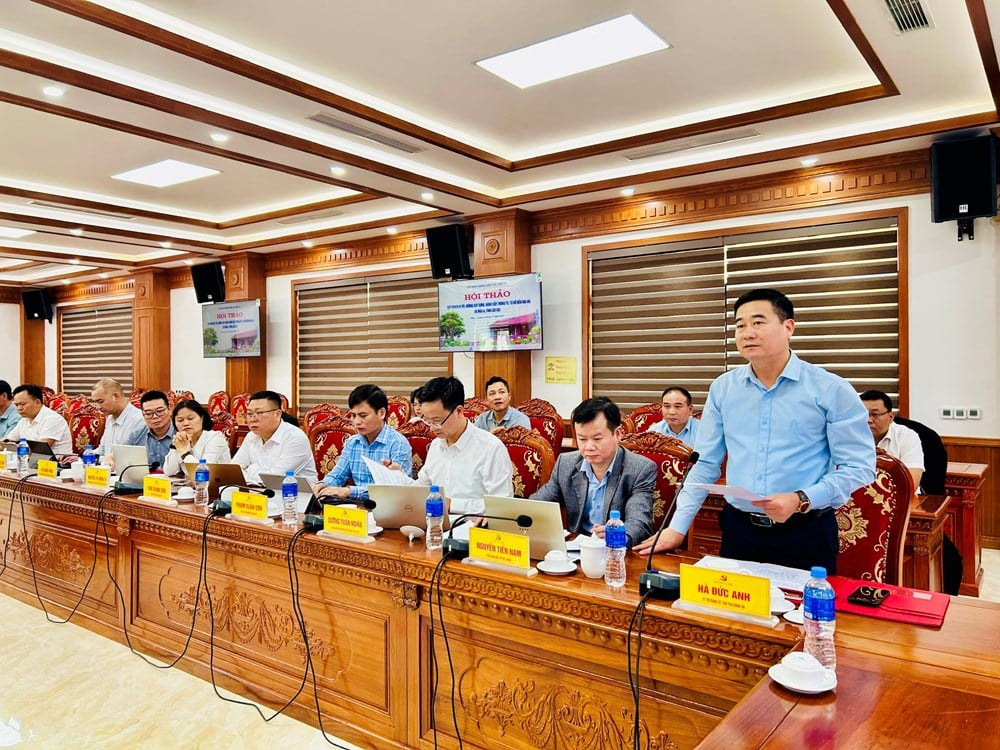
Meritorious Artisan Dang Ngoc Anh, Head of Dai An Temple, expressed his hope that the restoration and construction of Dai An Temple will be carried out in accordance with regulations, ensuring all principles in the conservation and restoration of relics, thereby bringing a warm, solemn and luxurious space for religious practice to local people.
He hopes to continue receiving attention and encouragement from leaders at all levels and the community, so that the work of preserving, protecting and promoting heritage values in the locality will be more and more effective and sustainable.
Towards a worthy spiritual work
Prof. Dr. Bui Quang Thanh, Senior Researcher, Vietnam Institute of Culture, Arts, Sports and Tourism, said that the concept of “intact preservation” is not easy to define, because it depends on each historical period. He emphasized: “Preservation in development means both meeting the spiritual needs of the people and harmoniously solving the economic and cultural development strategy of the locality.”
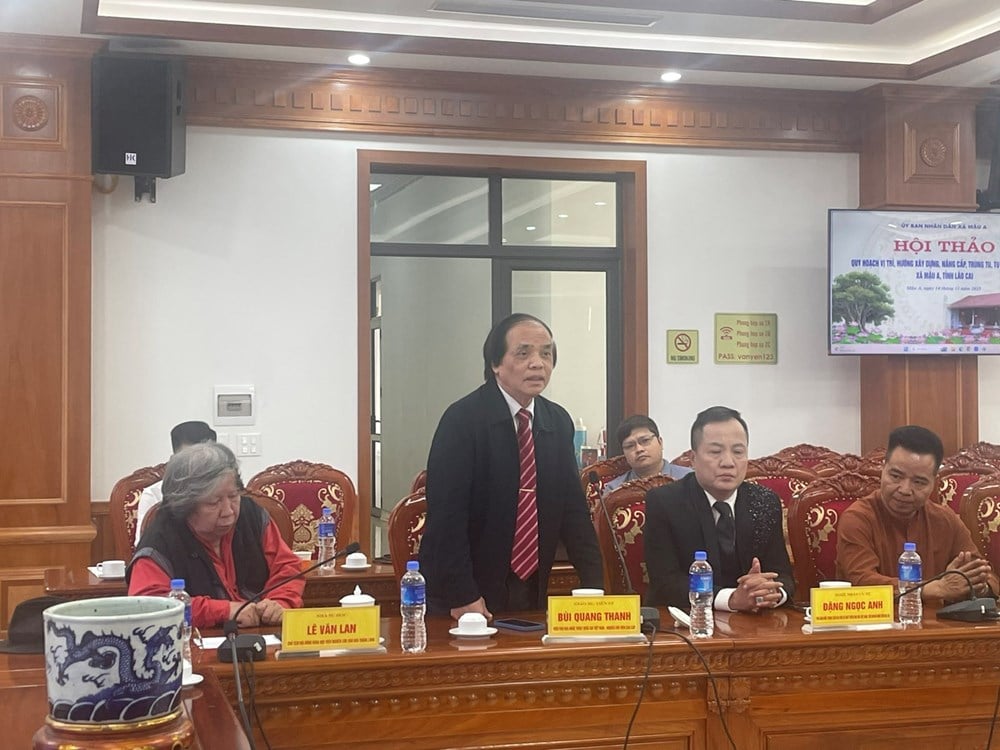
According to Prof. Dr. Bui Quang Thanh, Mau A has a central location, convenient transportation, connecting with many historical and cultural relics in the area. The high land, where ancient Vietnamese people lived very early, even before the Van Lang period, shows that this is a "good land for birds to nest". Therefore, the locality needs to orientate to expand tourism development, contributing to economic development.
Mau A commune currently possesses two important groups of tourism resources: natural and ecological resources, suitable for investment in ecotourism development; and human resources, including a system of historical and cultural relics.
In particular, Dai An Temple should be considered as the connecting nucleus. At the same time, preservation must be based on the principle of both meeting the spiritual needs of the community and contributing to promoting the local economy.

The worship system in Dai An also has a unique feature when two forms exist at the same time: Hung King worship and Dong Cuong Mother worship.
Professor Bui Quang Thanh emphasized that it is important to arrange the worship space reasonably, ensuring harmony between the two beliefs, in accordance with the traditions and spiritual life of the community.
At the workshop, Professor Le Van Lan requested that the preservation, restoration and construction of Dai An Temple should be considered on the legal basis of the relic ranking records. In addition, it is necessary to connect, research the origin, and supplement data on the relic. From there, the heritage will be enriched and the relic ranking level will be raised.
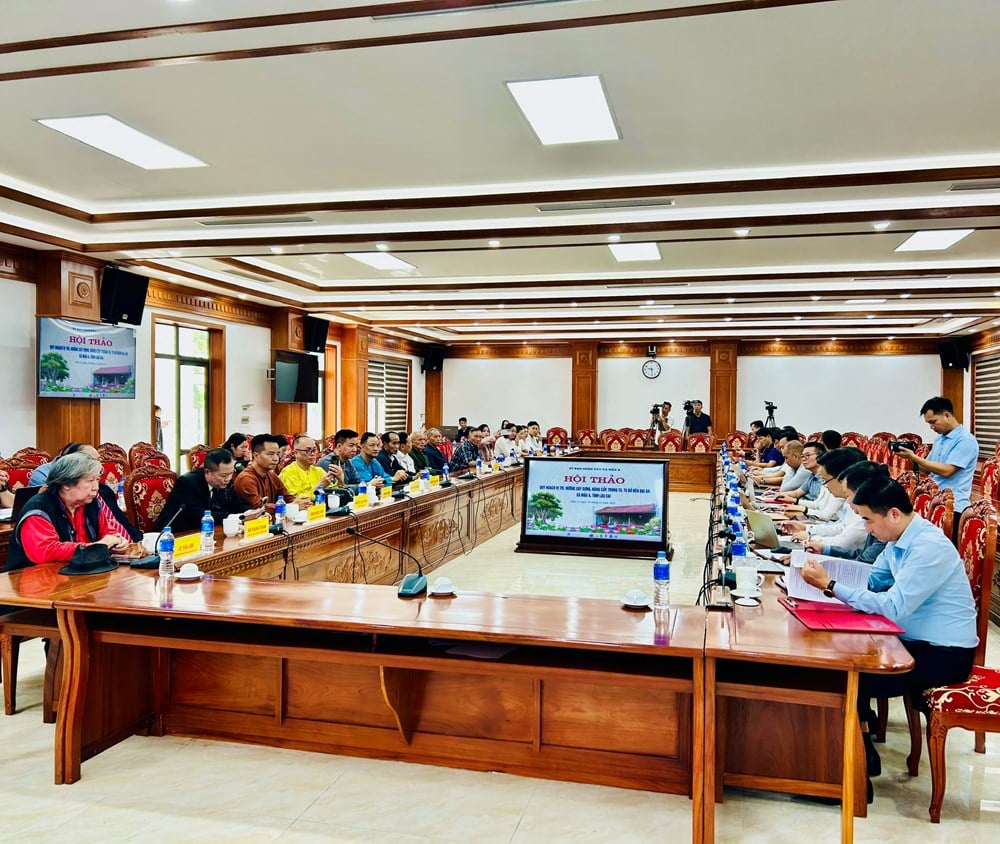
At the end of the workshop, the local government representative expressed his gratitude for the contributions that helped the locality to clearly, scientifically and sustainably shape the planning of Dai An Temple - ensuring both feng shui and preserving cultural identity. The project, once completed, is expected to become a spiritual support for the community, while promoting the development of cultural and spiritual tourism in Mau A in the coming years.
Mau A Commune People's Committee commits to fully absorb professional opinions and closely coordinate with relevant departments and branches to implement the project in accordance with regulations, cultural orientation and in accordance with local traditions.
Source: https://baovanhoa.vn/van-hoa/bao-ton-di-san-gan-voi-phat-trien-van-hoa-du-lich-181377.html


![[Photo] Unique art of painting Tuong masks](https://vphoto.vietnam.vn/thumb/1200x675/vietnam/resource/IMAGE/2025/11/14/1763094089301_ndo_br_1-jpg.webp)




![[Photo] Unique architecture of the deepest metro station in France](https://vphoto.vietnam.vn/thumb/1200x675/vietnam/resource/IMAGE/2025/11/14/1763107592365_ga-sau-nhat-nuoc-phap-duy-1-6403-jpg.webp)


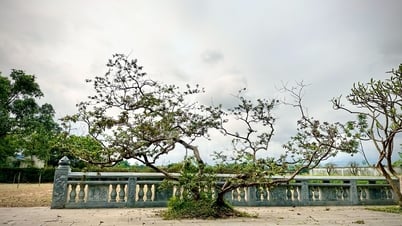



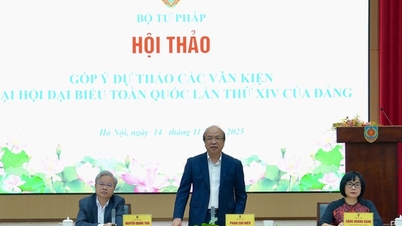

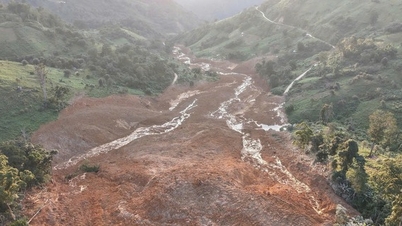


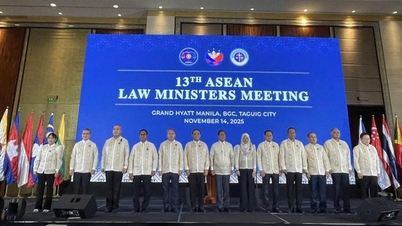

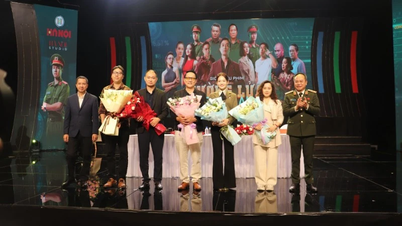





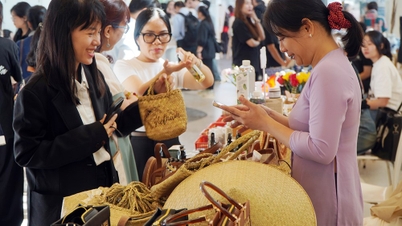



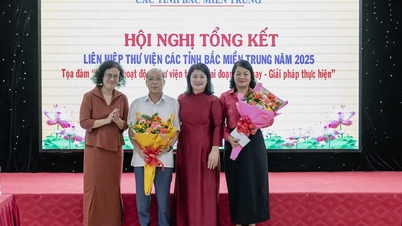

![[Photo] Special class in Tra Linh](https://vphoto.vietnam.vn/thumb/1200x675/vietnam/resource/IMAGE/2025/11/14/1763078485441_ndo_br_lop-hoc-7-jpg.webp)









































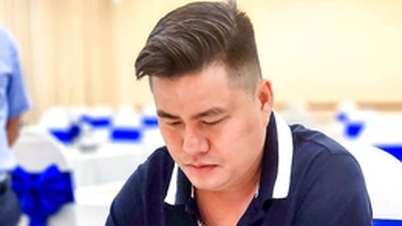



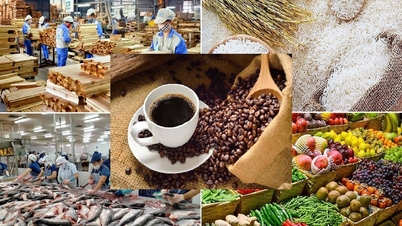


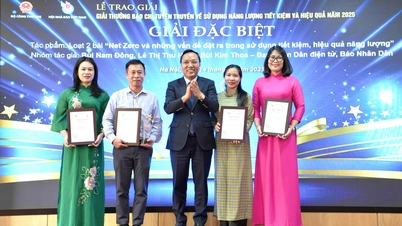

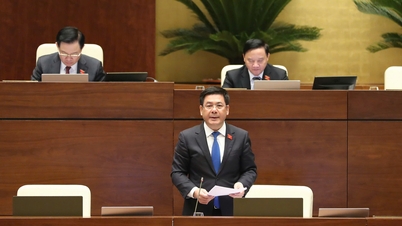








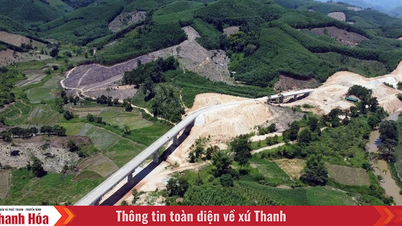
















Comment (0)